

Our Courses

Linux Embedded System Topics and Projects
This course is used as the capstone in a three course sequence, including Linux System Programming and Introduction to Buildroot and Linux Kernel Programming and Introduction to Yocto Project. Both of these courses must be completed before starting this course. This course builds on the content in the previous two prerequisite courses to develop a final project of your choosing targeting Linux device targeting hardware. The final project is delivered using concepts from Agile Scrum.
-
Course by

-
 Self Paced
Self Paced
-
 47 hours
47 hours
-
 English
English

Operating System Foundations
In this course, we take a look at what an actual operating system is. People often confuse operating systems with browsers and many other things. We take a look at Windows versus Linux versus MacOS and discuss how these operating systems evolved. We also get into some technical detail about the components that make up an operating system.
-
Course by

-
 Self Paced
Self Paced
-
 3 hours
3 hours
-
 English
English
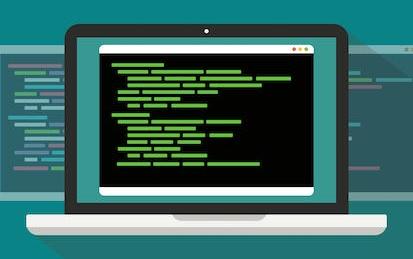
Master How to Manage Linux Applications
In this 1-hour long project-based course, you will learn how to Print, manage and kill Linux processes using the terminal, Use job control to postpone the execution of jobs and regain it, and automate the specific script at a specific time using crontab.
-
Course by

-
 Self Paced
Self Paced
-
 2 hours
2 hours
-
 English
English

Digital Forensics Essentials (DFE)
Digital Forensics Essentials helps learners increase their competency and expertise in digital forensics and information security skills, thereby adding value to their workplace and employer. This course will introduce learners to Computer Forensics Fundamentals as well as the Computer Forensics Investigation Process. Plan to learn about Dark Web, Windows, Linux, Malware Forensics, and so much more!
-
Course by

-
 Self Paced
Self Paced
-
 25 hours
25 hours
-
 English
English

Create User Directory and Files with Linux Commands
Practically everything on a Linux operating system is a directory or file.
-
Course by

-
 Self Paced
Self Paced
-
 2 hours
2 hours
-
 English
English

Agile with Atlassian Jira
This course discusses common foundational principles and practices used by agile methodologies, providing you with a flexible set of tools to use in your role (e.g. product owner, scrum master, project manager, team member) on an agile team. Learn agile and lean principles, including kanban and scrum, and use Jira Software Cloud as the tool to apply hands-on exercises in these topics. The course includes instruction on company-managed and team-managed Jira projects.
-
Course by

-
 Self Paced
Self Paced
-
 13 hours
13 hours
-
 English
English

Introduction to High-Performance and Parallel Computing
This course introduces the fundamentals of high-performance and parallel computing. It is targeted to scientists, engineers, scholars, really everyone seeking to develop the software skills necessary for work in parallel software environments. These skills include big-data analysis, machine learning, parallel programming, and optimization. We will cover the basics of Linux environments and bash scripting all the way to high throughput computing and parallelizing code. We recommend you are familiar with either Fortran 90, C++, or Python to complete some of the programming assignments.
-
Course by

-
 Self Paced
Self Paced
-
 14 hours
14 hours
-
 English
English

DevOps for Network Automation (NetDevOps)
This course will introduce students to various DevOps tools, such as Git and virtual environments for Python Development, and explain the concept of continuous integration. The topics of how different development methodologies are used in DevOps, such as the agile process.
-
Course by

-
 Self Paced
Self Paced
-
 4 hours
4 hours
-
 English
English

Data Security
If you are an associate-level cybersecurity analyst who is working in security operation centers, this course will help you explore data type categories in context to network security analytics.
-
Course by

-
 Self Paced
Self Paced
-
 16 hours
16 hours
-
 English
English

Visual Basic Programming: Classes and Collections
This course is the third course in a series that aims to prepare you for a role working as a programmer. In this course, you will be introduced to the four main concepts in programming: Advanced String Operations and Dates, Modeling Classes, Development of Classes and Collections. Labs will allow the students to apply the material in the lectures in simple computer programs designed to re-enforce the material in the lesson.
-
Course by

-
 Self Paced
Self Paced
-
 28 hours
28 hours
-
 English
English
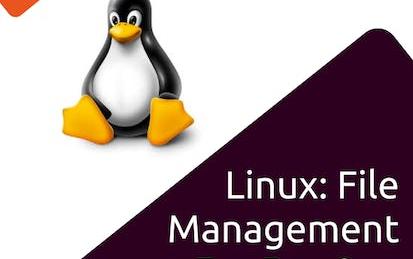
Linux: File Management for Devops
In this 1-hour long project-based course on Linux file management for DevOps, you will be working entirely on the command line and using powerful Linux commands working with files and directories and manipulating them. We will copying, moving and creating symlinks between files, as well as learning how to search through outputs and cut outputs by columns to only retrieve the data fields that we need. We will learn various commands and options that will give you the confidence to work with files in most Linux environments.
-
Course by

-
 Self Paced
Self Paced
-
 3 hours
3 hours
-
 English
English

Juniper Cloud Concepts and Open Source Technologies
In this course, you will learn fundamental cloud computing concepts. This course covers key benefits of cloud computing, cloud service models such as SaaS and IaaS; public, private and hybrid cloud deployment models and open-source cloud technologies. You will learn about Linux virtualization techniques, QEMU-KVM, Libvirt and popular cloud instance initialization approach cloud-init. This course covers the concepts of namespaces and how to connect them through Linux bridges and OpenvSwitch. You will also learn about containerization through Docker, Dockerfile and Docker networking.
-
Course by

-
 Self Paced
Self Paced
-
 5 hours
5 hours
-
 English
English

Deploy a website with Azure Virtual Machines
If your web hosting requirements aren't directly supported by the Azure Web app platform, you can leverage virtual machines to customize and control every aspect of ta webserver. In this course, you will learn how to create, configure, and manage virtual machines on Linux and Windows that host web apps. You will look at the decisions made before creating a VM, the options to create and manage the VM, and the extensions and services you use to manage your VM. You will learn how to create a Linux virtual machine using the Azure portal.
-
Course by

-
 Self Paced
Self Paced
-
 9 hours
9 hours
-
 English
English

Ansible for Network Automation
This course will train you on the fundamentals of Ansible, an open-source, extensible configuration management tool that streamlines infrastructure management in modern networking environments. You will also learn about Jinja2, a templating language that expands flexibility in automation tasks.
-
Course by

-
 Self Paced
Self Paced
-
 3 hours
3 hours
-
 English
English

Integrated development environments in Linux
In this project, you will install and explore five free Integrated Development Environments or IDEs on a Linux System.
-
Course by

-
 Self Paced
Self Paced
-
 3 hours
3 hours
-
 English
English

Internet of Things V2: Setting up and Using Cloud Services
Have you wondered what exactly AWS is and why is it important? Do you want to make informed design decisions about which services to use? Do you want to gain expertise to leverage the cloud for your own projects? In this course, you will learn to interface with the AWS cloud. You will then develop software to send data to and receive data from the cloud.
-
Course by

-
 Self Paced
Self Paced
-
 10 hours
10 hours
-
 English
English
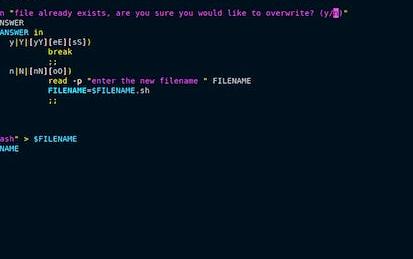
Automation Scripts Using Bash
In this 2-hour long project-based course, you will learn how to create Bash scripts that automates long and tedious tasks, evaluate and review some of the most commonly-used linux commands, and understand concepts such as conditional statements, loops, piping, and redirection to create powerful scripts.
-
Course by

-
 Self Paced
Self Paced
-
 3 hours
3 hours
-
 English
English
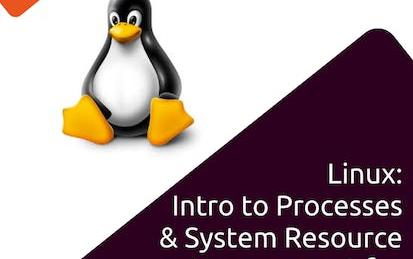
Linux: Processes & System Resource Management for DevOps
In this 1-hour long project-based course on Linux: Intro to process and system resource management for DevOps, you will be working entirely on the command line and using powerful Linux commands such as ps -ef, top, and pstree to learn how process and system resources work and are managed in Linux. You will be starting, stopping, searching and viewing running processes and seeing how they are all linked together in the process hierarchy.
-
Course by

-
 Self Paced
Self Paced
-
 3 hours
3 hours
-
 English
English

Practical Vim Editor Commands On Linux
Vim, or vi improved, is a standard editor on Linux. It comes with virtually every version of Linux out there and is available on Mac and Windows as well. If you are in a situation where you need to edit from the command line, for example when you ssh into another system, vim will be there. Vim is an ordinary text editor, like notepad. It inserts no special characters into the text document unless you tell it to. Vim has some powerful commands that make it fast and efficient.
-
Course by

-
 Self Paced
Self Paced
-
 3 hours
3 hours
-
 English
English

C Programming: Pointers and Memory Management - 4
In this course, we will examine a key concept, foundational to any programming language: the usage of memory. This course builds upon the basic concept of pointers, discussed in C Programming: Modular Programming and Memory Management, and introduces the more advanced usage of pointers and pointer arithmetic. Arrays of pointers and multidimensional arrays are addressed, and you will learn how to allocate memory for your own data during program execution.
-
Course by

-
 Self Paced
Self Paced
-
 7 hours
7 hours
-
 English
English

Dive Into Ansible - Beginner to Expert in Ansible - DevOps
Docker Captain, CNCF Ambassador and Industry Veteran James Spurin (25+ Years experience in Technology with a career spanning Engineering, Development and Senior Management at Goldman Sachs, Dell EMC and Virgin Internet) brings you the most concise Ansible learning resource available. Taking you from Beginner to Advanced in one course! Ansible models your IT infrastructure by describing how all of your systems interrelate, rather than just managing one system at a time.
-
Course by

-
 Self Paced
Self Paced
-
 8 hours
8 hours
-
 English
English

Create a C# UI on Linux using MonoDevelop
By the end of this project you will create a C# GTK# UI application using the Mono library and MonoDevelop IDE using a GTK# project.
-
Course by

-
 Self Paced
Self Paced
-
 4 hours
4 hours
-
 English
English

Design and Analyze Secure Networked Systems
In this MOOC, we will learn the basic cyber security concepts, how to identify vulnerabilities/threat in a network system. We will apply CIA basic security services in the triage of recent cyberattack incidents, such as OPM data breach. We will learn the risk management framework for analyzing the risks in a network system, and apply the basic security design principles to protect the data and secure computer systems. We will examine the trustworthiness of programs and data installed in our systems and show the proper way to verify their integrity and authenticity.
-
Course by

-
 Self Paced
Self Paced
-
 17 hours
17 hours
-
 English
English

Beginning Custom Projects with Raspberry Pi
In this course you will use a Raspberry Pi 4 to build a complete network-connected project with sensors and motors and access it from your smartphone. We'll explore all the parts which make this work, so you can use this experience as a foundation for your own projects. We'll use the Raspberry Pi as an "embedded system" (as opposed to a desktop computer) so you're ready to build a Raspberry Pi into your projects as the brains that make it all work. Want to build your own Internet of Things (IoT) device? Home automation? Robotics?
-
Course by

-
 Self Paced
Self Paced
-
 14 hours
14 hours
-
 English
English
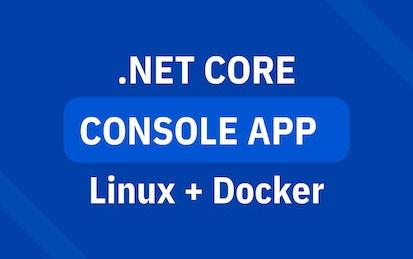
Create and run a .NET Core console app in Linux using docker
This Guided Project "Create and run a .NET Core console app in Linux using docker" is an intermediate level project that is suitable for anyone interested in application development.
-
Course by

-
 Self Paced
Self Paced
-
 2 hours
2 hours
-
 English
English



